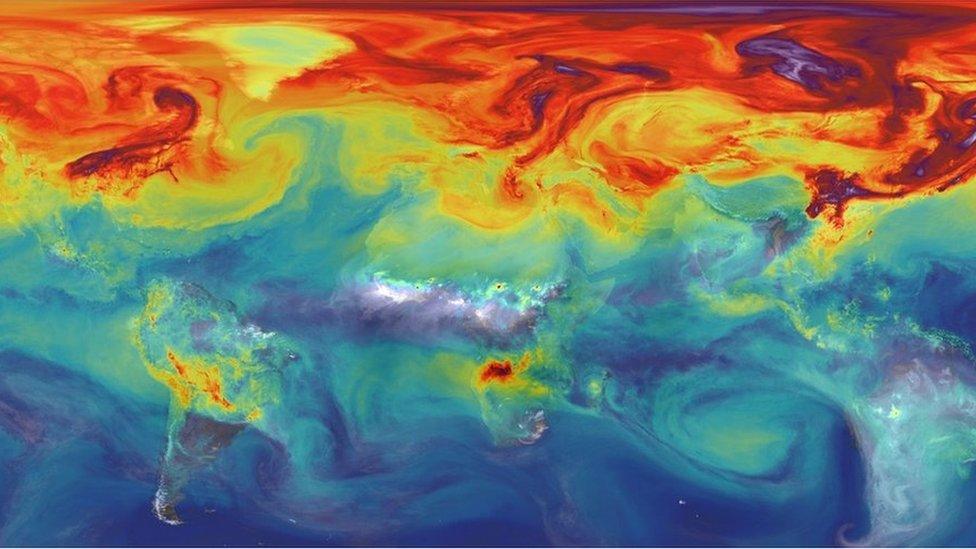British radio antenna arrives at space station
- Published
David Kenyan and Libby Jackson describe the importance of the antenna
The UK's first industrial contribution to the International Space Station (ISS) was delivered on Tuesday.
The communications antenna is part of a consignment of supplies that arrived on a Cygnus freighter.
Made by MDA UK, the Columbus Ka-band (COLKa) Terminal will enable astronauts to connect with scientists and family on Earth at home broadband speeds.
The equipment will be fixed to the exterior of Europe's ISS science module in a few weeks' time.
This should improve substantially on current arrangements for radio links.
"At the moment, the communications from Columbus go through the American data relay satellites, but those satellites are prioritised for US use. This gives Europe some independence," David Kenyon, the managing director of Oxfordshire-based MDA UK, told BBC News.
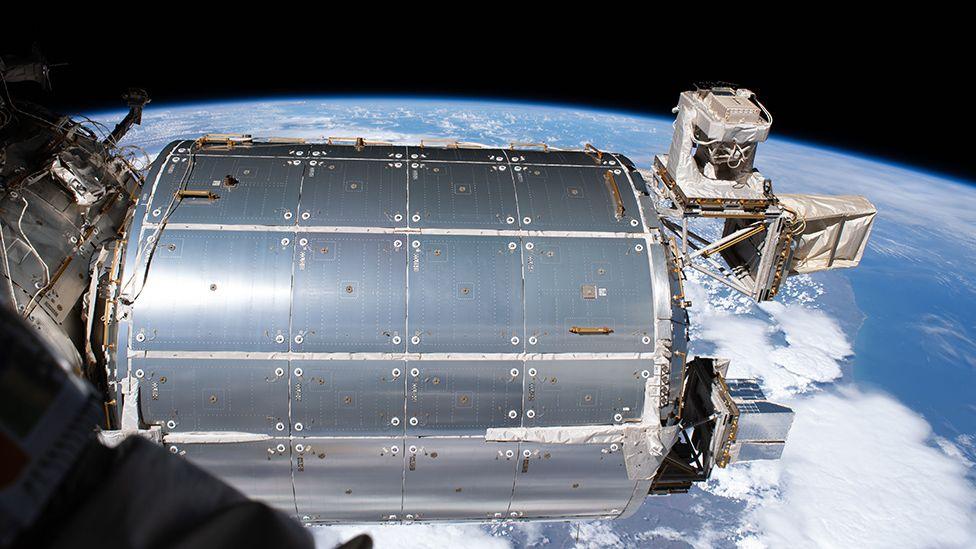
The Columbus lab is currently going through an upgrade programme
Although Britain was an original signatory to the 1998 treaty that brought the International Space Station into being, the country never got involved in building the platform.
Indeed, it pretty much walked away from the project right at the outset, preferring to spend its civil space budget in other areas of space exploration.
It wasn't until 2012 that the UK signalled a reversal in policy by lodging new funds that year at the European Space Agency's (Esa) Ministerial Council meeting in Naples.
This money not only paved the way for British astronaut Tim Peake to visit the ISS in 2015/16 but it set in motion the industrial opportunity that's ultimately resulted in the COLKa contribution.
The new fridge-sized terminal will route video, voice and data to the ground through satellites that are actually higher in the sky than the ISS.
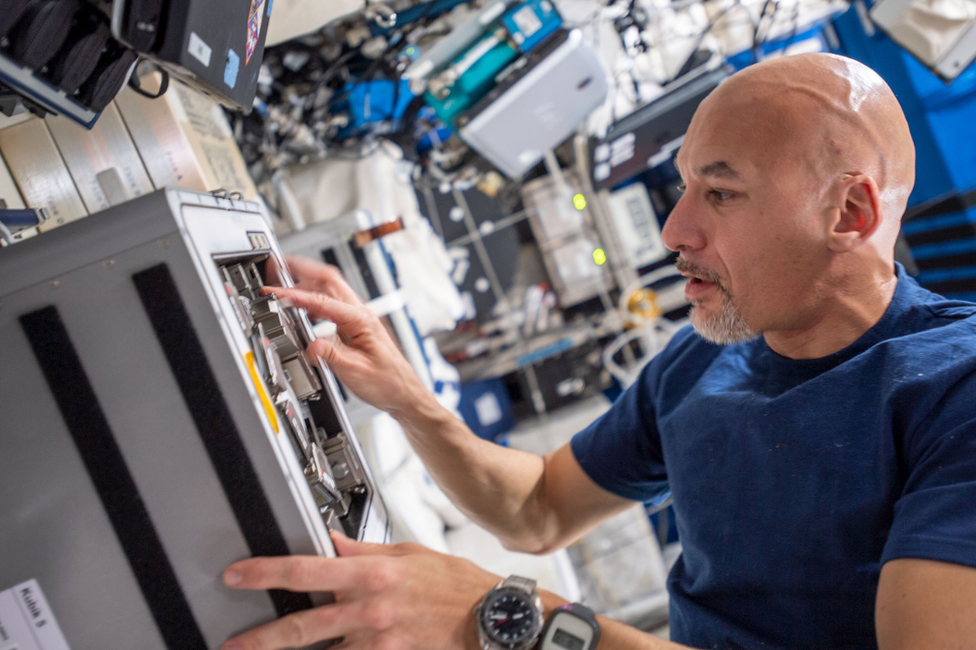
The astronauts will video call scientists to discuss Columbus-run experiments
On occasions, these will continue to be the nodes in the American Tracking and Data Relay Satellite System (TDRSS), but the capacity is now there to go through a European alternative as well.
The European Data Relay System (EDRS) only has one satellite operating at the moment but will soon have a second.
This will afford the possibility of tens of minutes of dedicated, high-bandwidth connectivity for the Columbus lab on every 90-minute orbit of the Earth made by the station.
Astronauts are expected to use COLKa to video-call scientists who have experiments running on the ISS, and to make "welfare" connections with family and friends on Earth.
Libby Jackson, the human exploration programme manager at the UK Space Agency, said scientists in particular would be delighted with the new connection.
"The amount of science data that's been able to come down has been quite limited," she told BBC News.
"Scientists have been having to wait months for all their images, all of the science data to arrive on hard disks - never mind 'dial up speeds'. It's sort of like waiting for the old floppy disks to arrive in the post. This is going to really allow those scientists to get the data in real time."
MDA UK assembled the terminal at its facility on the Harwell space campus using components from Italy, Canada, Norway, Belgium, France, and Germany.
Britain lodged further funds at the most recent Esa Ministerial Council in Seville, Spain, so that its home industry could be involved in the construction of the forthcoming lunar space station.
Known as the Gateway, this American-led platform will support astronauts on the Moon's surface. The UK is once again seeking a communications role for its companies.
An ISS robotic arm captured the Cygnus freighter at 09:05 GMT, prior to the manoeuvre that would pull the vehicle into a berthing position. COLKa will be stored aboard the platform for a few weeks before being bolted to the exterior of Columbus in a spacewalk.
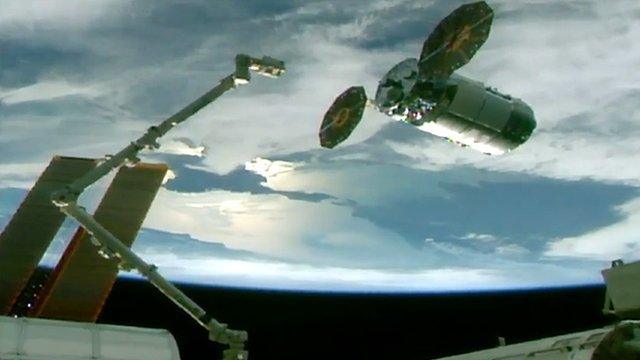
Cygnus capture occurred 426km (265 miles) above south-eastern Russia
Jonathan.Amos-INTERNET@bbc.co.uk and follow me on Twitter: @BBCAmos, external
- Published5 February 2020
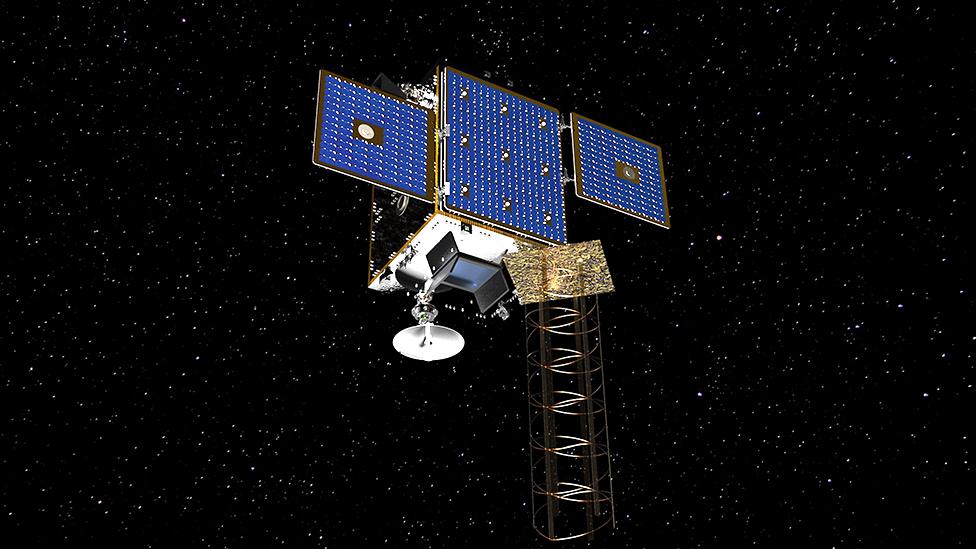
- Published28 November 2019
